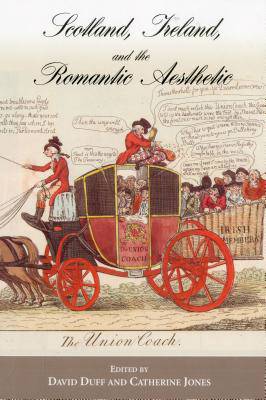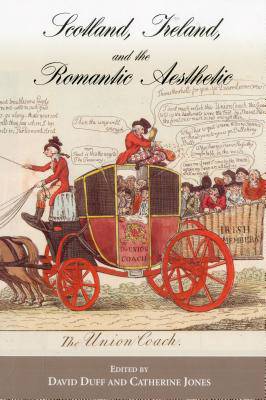
- Afhalen na 1 uur in een winkel met voorraad
- Gratis thuislevering in België vanaf € 30
- Ruim aanbod met 7 miljoen producten
- Afhalen na 1 uur in een winkel met voorraad
- Gratis thuislevering in België vanaf € 30
- Ruim aanbod met 7 miljoen producten
Zoeken
Scotland, Ireland, and the Romantic Aesthetic
€ 117,45
+ 234 punten
Omschrijving
In this ground-breaking comparative study of Scottish and Irish Romanticism, leading scholars examine literary relations between Scotland, Ireland, and England in the period 1760-1830, an age of political upheaval and constitutional change that witnessed the Irish Rebellion, the Act of Union, major internal migration, and the cultural repositioning of Ireland and Scotland within a newly conceived 'United Kingdom.' Adopting an 'archipelagic' approach, contributors reveal how national and regional factors played a pivotal role in shaping the literary forms and cultural reception of Romantic aesthetics, with the Scottish-Irish binary serving as a ubiquitous point of reference. The essays extend existing work on the national tale and historical novel to identify previously unexplored areas of comparative inquiry such as national song, topical satire and verse romance, national painting, and travel literature. The book offers an exciting new map of the cultural geography of the Romantic era, and establishes a dynamic methodology for future comparative work.
Specificaties
Betrokkenen
- Uitgeverij:
Inhoud
- Aantal bladzijden:
- 294
- Taal:
- Engels
- Reeks:
Eigenschappen
- Productcode (EAN):
- 9781611482317
- Verschijningsdatum:
- 1/09/2007
- Uitvoering:
- Hardcover
- Formaat:
- Genaaid
- Afmetingen:
- 168 mm x 243 mm
- Gewicht:
- 603 g

Alleen bij Standaard Boekhandel
+ 234 punten op je klantenkaart van Standaard Boekhandel
Beoordelingen
We publiceren alleen reviews die voldoen aan de voorwaarden voor reviews. Bekijk onze voorwaarden voor reviews.










